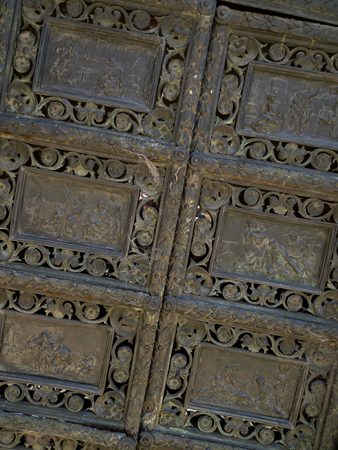
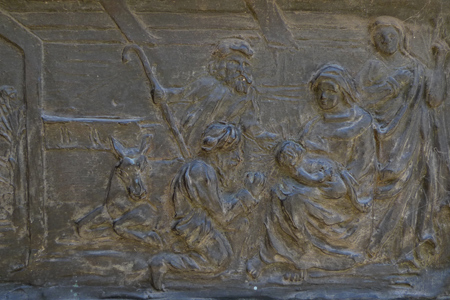
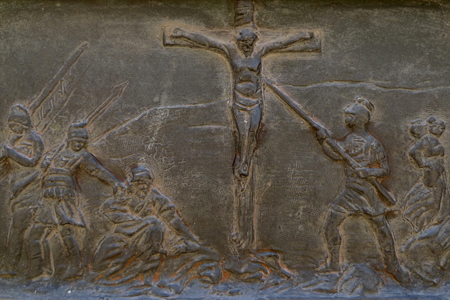
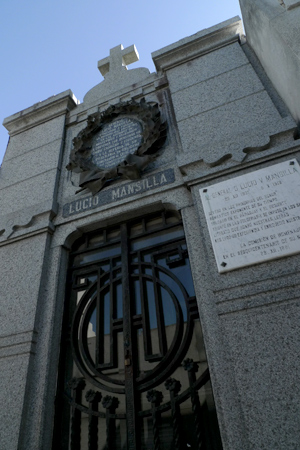
Lucio Victorio Mansilla was, like Ascasubi, a man whose life could have been a novel. Mansilla embodied the Romantic character: military man, writer, traveler, bon vivant.
Mansilla was born in Buenos Aires in 1831… son of Coronel Lucio Mansilla & Agustina Rozas, sister of Juan Manuel de Rosas, who they called “the star of the Federation.” As a teenager, his parents sent him on a trip to Asia, the Middle East & Europe in order to discourage a love “that was not to his convenience.” Young Lucio traveled through India, Egypt & Turkey as well as France, Italy & England. Those travels would later become material for future works of literature.
After the fall of Rosas, Mansilla’s family moved to France for a year. Lucio married his cousin, Catalina Ortiz de Rosas y Almada, after their return. He challenged José Mármol to a duel in 1856, thinking that the writer had offended his father in the novel “Amália.” The future author was exiled for three years & later sent to fight in the war against Paraguay:
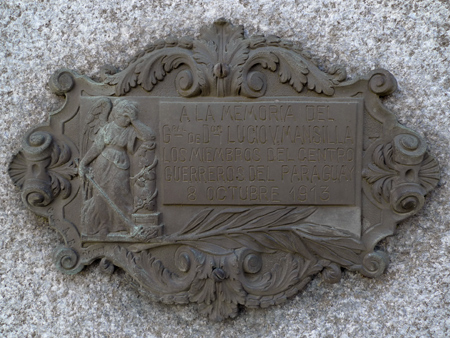
In 1868 Mansilla supported Sarmiento in his bid for President, who later designated him as frontier commander in Río IV, Córdoba. From there, he embarked on a journey south to defend a peace treaty with the ranquel/rankülche tribe. Mansilla spent 18 days with them & wrote his experiences down to be published in the “La Tribuna” newspaper. His style was colloquial & included many stories, even those told by the campfire. They were published together as “A Visit to the Ranquel Indians,” one of the most striking works of Argentine literature.
Below is an 1868 photo of Mansilla (center, wearing a cape) in what is now Plaza Roca in Río IV… two years before leaving for ranquel territory:
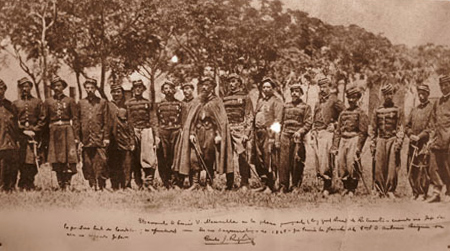
From 1876 until his 1913 death in Paris, Mansilla occupied a large number of political positions & published a number of books. But the most important experience of his life—living through & telling his time among the indigenous people of Argentina—had already passed. Mansilla rests in peace in the family vault with his mother & father, & this vault was declared a National Historic Monument in 1946:
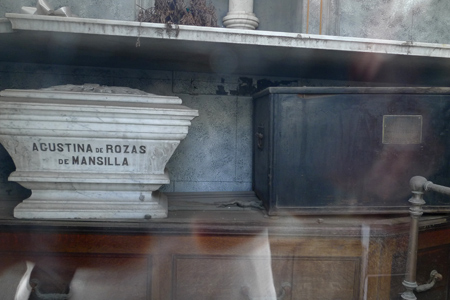
Update (29 Aug 2012): Interestingly, David William Foster of Arizona State University considers Mansilla’s tales of the ranqueles as “one of the great classics of nineteenth-century Argentine prose, ranking perhaps only behind Sarmiento’s Facundo.” More info can be found here.
Photo of Mansilla in Río IV courtesy of the area’s Regional Historic Museum.
4 Comments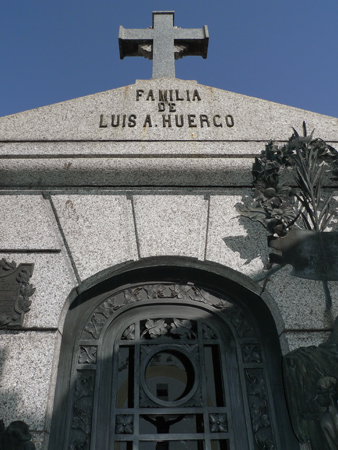
Born in Buenos Aires in 1837, Luis Huergo completed his high school education in Maryland, USA then went on to become the first civil engineer to graduate from an Argentine university. He coordinated the construction of bridges throughout the Province of Buenos Aires with British assistance, built sections of new railroad, & improved the infrastructure of a growing nation.
Although he served as a Senator in the 1870’s as well as Dean of what eventually became the Engineering faculty, Huergo is most remembered for a project he never completed: a new cargo port for Buenos Aires. He had already deepened the exit for the shallow Riachuelo, allowing transatlantic liners to enter directly. It was only natural for Huergo to be part of a design contest for the new port.
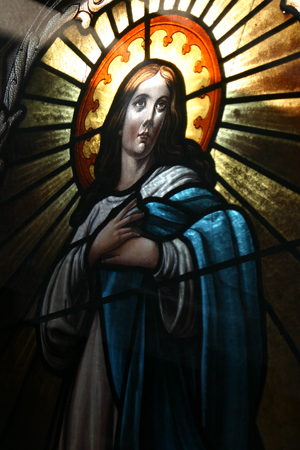
Huergo had some tough competition & an alternative plan was proposed by local merchant Eduardo Madero. Madero’s design was accepted over Huergo’s with ships entering through the southern canal, loading & unloading goods in any of four dykes, then exiting north. By the time Puerto Madero was inaugurated in 1897, it was obsolete. Madero’s design did not allow expansion of any kind… much needed when ships were growing larger & larger. Congestion was a considerable problem during Puerto Madero’s heydey with an amazing 32,000 embarkations made in 1910 alone:
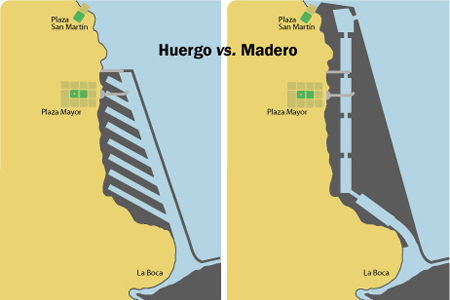
To add capacity to Puerto Madero, Huergo’s design was reworked in 1907 & completed by 1919. The in-and-out design of Puerto Nuevo is more efficient & continues to function as the current port for Buenos Aires. All cruise & container ships dock there, & a gigantic plaque to Huergo highlights his biggest BA contribution:
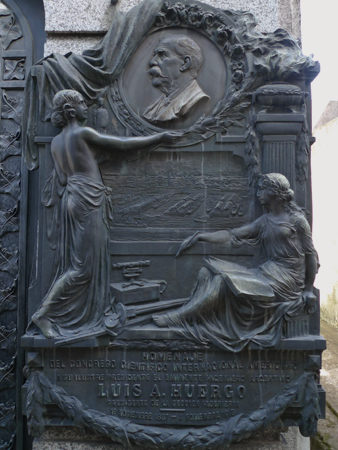
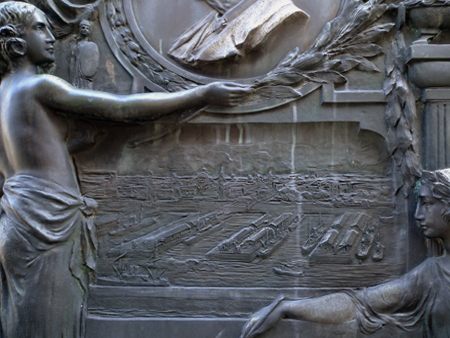
Huergo’s son, Eduardo, also became an engineer & was responsible for the rectification of the Riachuelo. Those curves were replaced by a straight line in Eduardo beginning around 1927:
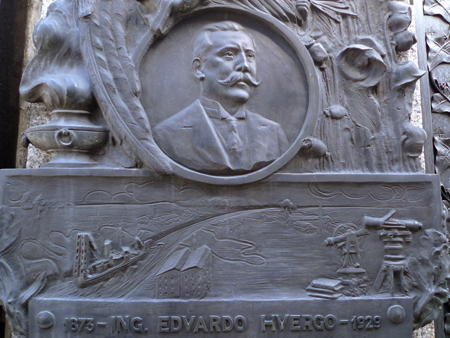
At the age of 73, Luis Huergo formed part of a national commission dedicated to petroleum exploitation in Patagonia. He advocated government control to avoid the emergence of monopolies like Standard Oil while Dr. Pedro Arata, also part of the five-member board, thought private companies would be a better option. Huergo won in the end as the commission transformed into Yacimientos Petrolíferos Fiscales, remaining a state-run company until 1991. Huergo passed away in 1913 & left a legacy which remains apparent even 100 years after his death.
Leave a Comment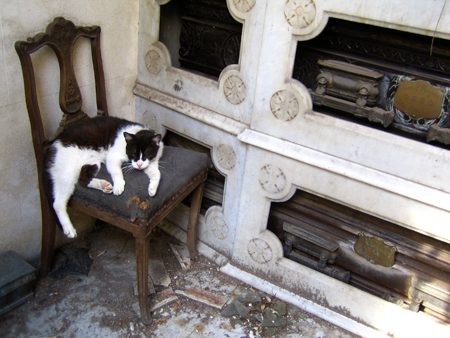
One of the most common —& perhaps surprising— sites at Recoleta Cemetery is the large number of cats that wander around, relax in the sunshine & allow visitors to pet them. In the early morning or around 17:00, women with bags can be seen surrounded by cats who they call by name. These women form part of a volunteer group that feeds the cats, spays or neuters them, & whenever necessary takes them to a local veterinarian.
One woman from Recoleta neighborhood coordinates all cat care & does not want her identity revealed “because I am a well-known person.” She says that for the past 12 years she has done this so “the cats are provided for, & above all, so that there are no rats in the cemetery.” The food is prepared in her home & consists of rice with liver or heart, among other preparations. In addition, once per month all cats are inoculated with an anti-flea injection & given any other veterinary care they may need.
There are around 40 cats at present, & it is prohibited to take one home. “The police will stop you,” she says.
She affirms that all this care “comes out of our own pockets”… although she would be happy to receive donations. See the alert box below for more details.
The last thing we asked about was why she does this. The answer was very simple: “for love of the cats.”
As mentioned, the cat caretakers value their privacy. If any reader would like to make a donation, please leave a comment in this post, & we can put you in contact with the volunteers.
6 Comments